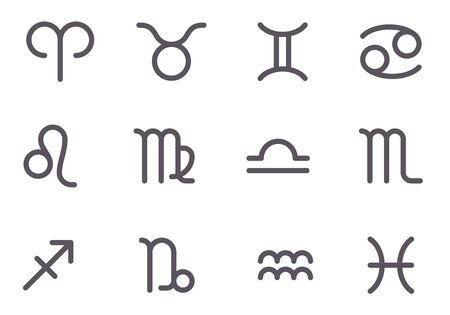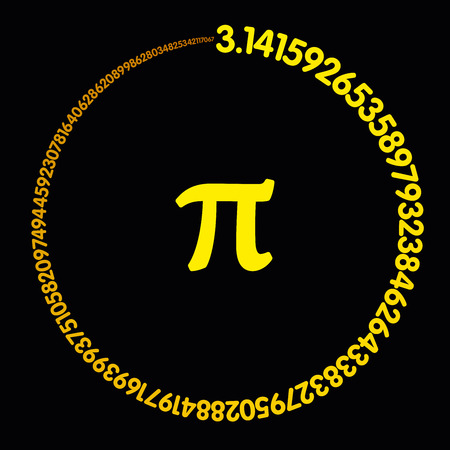Raphael: The Man Behind the Name
In the bustling heart of early 19th-century Britain, a time characterised by rapid industrialisation and evolving social norms, Robert Cross Smith emerged as a significant figure in the revival of astrology. Born in 1795, Smith came of age during an era when traditional beliefs were being questioned and new scientific ideas were flourishing. Yet, amidst this climate of change, he found inspiration in the mystical arts. Recognising both the public’s fascination with the occult and a gap in accessible astrological literature, Smith adopted the pseudonym “Raphael.” This name not only evoked associations with wisdom and angelic guidance, but also provided him with a unique identity that resonated with Victorian sensibilities. By stepping into the persona of Raphael, Smith was able to bridge the gap between ancient traditions and contemporary curiosity, laying the foundation for his influential role within British society. His work would go on to shape how astrology was understood and practised throughout the Victorian era, blending practical advice with spiritual insight at a time when many sought meaning beyond the material world.
2. The Birth of Victorian Astrology
During the early 19th century, astrology was often dismissed as an outdated superstition in British society. However, Raphael—born Robert Cross Smith—played a pivotal role in revitalising and popularising astrology throughout the Victorian era. His approachable writing style, combined with a keen understanding of the public’s curiosity about fate and destiny, helped spark a significant cultural shift.
Raphael’s astrological almanacs became household staples, not only amongst the upper classes but also among everyday Victorians. These publications were written in clear English, using contemporary references and idioms familiar to British readers. By demystifying astrological concepts and offering practical guidance—such as weather predictions or personal horoscopes—Raphael made astrology accessible and relevant to daily life.
Cultural Shift in Perception
The Victorian era was marked by rapid industrialisation and scientific discovery, yet there remained a collective yearning for meaning beyond rationality. Raphael’s work provided a bridge between these worlds. As more people turned to astrology for insight and comfort, its image evolved from that of an eccentric pastime to a respectable subject of interest.
Key Factors in Popularisation
| Factor | Description |
|---|---|
| Accessible Language | Raphael wrote in plain English, making astrology understandable to all social classes. |
| Practical Application | His almanacs included weather forecasts, planting guides, and personal horoscopes relevant to daily Victorian life. |
| Cultural Resonance | He connected astrological insights with common British values and experiences, grounding his advice in local culture. |
| Wider Distribution | The affordability and availability of his publications ensured widespread reach across Britain. |
Astrology as Social Commentary
By weaving astrological interpretation into commentary on societal trends and everyday concerns, Raphael encouraged Victorians to view astrology not just as entertainment but as a tool for self-reflection and practical decision-making. This shift laid the groundwork for astrology’s enduring presence in British culture, influencing how future generations would seek guidance amid uncertainty.

3. Publications and Lasting Legacy
When considering the influence of Raphael, or Robert Cross Smith, on Victorian astrology, it is impossible to overlook his remarkable contributions through publishing. Among his most enduring legacies is Raphael’s Ephemeris, a yearly almanac that became a staple for both amateur stargazers and professional astrologers across Britain. This publication meticulously charted planetary movements, eclipses, and astrological phenomena in a manner that was accessible and practical for daily use. It wasn’t just a technical guide; it was an invitation for people from all walks of life to engage with the mysteries of the cosmos in a very tangible way.
Key Works Shaping Victorian Astrology
Aside from the Ephemeris, Raphael authored several manuals and guides—such as The Guide to Astrology—which demystified complex astrological concepts and made them approachable for the average British reader. His clear, instructional writing style reflected the Victorian appetite for self-improvement and learning, helping many develop their own understanding of astrology without needing formal training. These publications were often found in households alongside Bibles and other reference books, reflecting their perceived importance in navigating everyday choices, from planting crops to choosing auspicious dates for marriages or business ventures.
Impact on Everyday Life and Professional Practice
Raphael’s works played a significant role in weaving astrology into the fabric of British daily life. For many Victorians, consulting Raphael’s Ephemeris became as routine as checking the weather forecast is today. It offered guidance not only on personal matters but also shaped public attitudes towards fate and free will. Professional astrologers also benefitted greatly from his clear calculations and reliable predictions, which set new standards for accuracy within the field. In effect, Raphael raised the bar for astrological professionalism in Britain, providing a foundation upon which later generations would build.
A Legacy That Endures
Even today, updated versions of Raphael’s Ephemeris remain in circulation throughout the UK, serving as a testament to Smith’s lasting influence. The language and approach he introduced helped normalise astrology within British society, making it more than just an esoteric pursuit—it became part of the mainstream conversation about destiny, character, and personal development. His legacy lives on not only through books but also through the countless individuals whose lives he touched by offering guidance during times of uncertainty and change.
4. Astrology’s Place in British Social Life
Astrology, championed by Raphael (Robert Cross Smith), gradually permeated the very fabric of Victorian British society. Once considered a mystical pursuit, it began to blend with daily routines and public conversation, evolving from an esoteric interest to a communal pastime. This transformation was not accidental; Raphael’s accessible writing style and practical predictions drew people from all walks of life into the world of celestial guidance.
By the mid-19th century, astrology found its way into various aspects of British culture. Parlour games involving fortune-telling became popular at gatherings, while horoscopes started appearing in local publications. The social acceptability of astrology grew as it shifted from private consultations to shared entertainment and advice.
The Spread Through Media
The Victorian press, ever responsive to popular trends, embraced astrology with enthusiasm. Newspapers and magazines began publishing regular columns offering astrological forecasts. These columns soon became a staple for readers seeking both amusement and insight into their personal lives. Raphael’s own almanacs set the precedent for this format, blending predictions with practical tips and moral guidance.
Astrology in Everyday Conversation
Astrological language seeped into everyday British conversation. People discussed their “stars” over tea or debated the fate written in their “horoscope” at social clubs. As Raphael’s works gained traction, astrology’s terminology—such as signs, houses, and planetary influences—became part of common parlance.
Key Areas Where Astrology Integrated into Victorian Society
| Aspect | Description | Example |
|---|---|---|
| Social Gatherings | Fortune-telling as entertainment | Card readings at parlours |
| Media Presence | Regular newspaper horoscope columns | The Liverpool Mercurys weekly forecasts |
| Everyday Language | Astrological terms used in conversation | “Mercury is in retrograde” becoming commonplace |
| Personal Decisions | Guidance for daily choices based on stars | Choosing wedding dates by astrological advice |
This cultural embedding of astrology made it more than just a passing trend; it became a subtle but persistent thread running through British life. By normalising astrological discussion and making predictions part of routine decision-making, Raphael helped ensure that astrology was no longer confined to scholarly circles but was woven into the tapestry of everyday existence across Britain.
5. Controversy, Critique, and Credibility
As Raphael’s works began to circulate widely in Victorian Britain, they did not go unchallenged. The burgeoning popularity of astrology during this period sparked intense debate across social and intellectual circles. Many in the scientific community regarded astrology with deep suspicion, often criticising it as a relic of superstition incompatible with the empirical rigor that defined the Victorian Age. Raphael himself became a figure both admired and admonished—his publications were devoured by curious readers, yet often dismissed by academics and sceptics who questioned their legitimacy.
Public reaction was complex: while some found comfort and guidance in astrological forecasts, others saw them as fanciful distractions or even potential sources of moral decay. Newspapers occasionally lampooned astrologers, and debates about astrology’s place in society were common in drawing rooms and coffee houses alike. Yet, Raphael’s accessible language and practical advice allowed his work to bridge the gap between highbrow criticism and popular appeal, contributing to an ongoing dialogue about science, belief, and personal destiny.
Despite the waves of scepticism, Raphael remained steadfast. He sought to ground his methods in tradition while also adapting them for a changing world. His resilience in the face of critique reflects a broader Victorian tension between rational progress and spiritual curiosity—a dynamic that still echoes in British attitudes towards astrology today.
6. Raphael’s Influence on Modern British Astrology
Raphael’s legacy as a Victorian astrologer continues to echo throughout contemporary British astrology. His innovative publications, particularly the “Raphael’s Ephemeris,” remain a staple for both amateur and professional astrologers across the UK. The accessibility and systematic approach he introduced helped remove much of the mystery surrounding astrological practice, allowing it to gain a foothold in mainstream British culture. Today, many astrologers credit Raphael with providing the foundations for their understanding and interpretation of natal charts and planetary transits.
Perceptions in Contemporary Society
In present-day Britain, astrology enjoys renewed popularity, especially among younger generations seeking meaning and guidance beyond traditional frameworks. The principles established by Raphael—clarity, methodical analysis, and public engagement—are still evident in how astrology is taught and practised today. Modern British astrologers often reference his works, appreciating his efforts to bridge the gap between esoteric knowledge and everyday life. His influence is visible in the language, symbolism, and even ethical considerations that shape current astrological discourse.
Institutional Recognition
Astrology societies across the UK frequently acknowledge Raphael as a foundational figure. He is cited in academic courses on the history of Western astrology and is featured in exhibitions at museums such as the British Museum. This institutional recognition underscores not only his historical significance but also his ongoing relevance. Raphael’s systematic approach has inspired structured study programmes and encouraged critical thinking within the astrological community.
A Lasting Cultural Impact
Ultimately, Raphael’s work paved the way for astrology to be regarded as both an art and a science within British society. His enduring influence is felt not only through textbooks and ephemerides but also through the cultural acceptance of astrology as a tool for self-reflection and personal growth. In modern Britain, his legacy is perceived with respect and gratitude by those who continue to explore the stars, reaffirming his place as a pioneer whose vision shaped the path for generations of astrologers to come.


